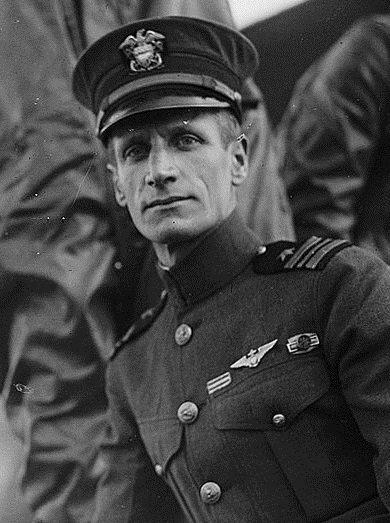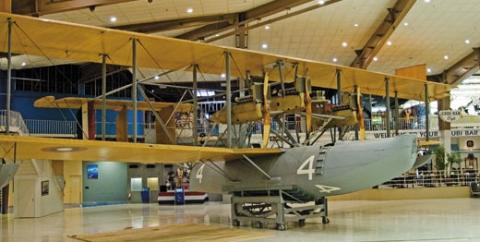READ-ALBERT
ALBERT CUSHING "PUTTY" READ

RADM

PILOT OF NC-4 THE FIRST AIRPLANE
TO FLY ACROSS ATLANTIC OCEAN
Curtiss flying boat NC-4 was the first aircraft to fly across the Atlantic Ocean, albeit not non-stop. In 1919 the Navy sought to demonstrate that floatplanes were capable of transatlantic flight, thus NC-1, NC-2, NC-3 and NC-4 were built. During early trials NC-2 was cannibalized for parts and on May 8, 1919, the remaining three departed Rockaway, New York, destination Lisbon, Portugal. Their route ran to Nova Scotia, proceeded to Newfoundland, then across the Atlantic via the Azores to Portugal, and finishing at England. The flight required stopping for refueling, repairs, and crewmen’s meals and rest. Along the route 53 Navy ships were positioned approximately every 50 miles like a string of pearls to assist in navigation and to rescue crewmen in case of any emergency.
On May 16 the three NCs departed from Newfoundland to the Azores Islands in the mid-Atlantic, a distance of about 1,200 miles. During the fifteen hour flight both NC-1 and NC-3 were forced to land at sea because poor visibility and loss of a visual horizon made flying extremely dangerous. NC-1 was damaged landing in the rough sea and was rescued by a Greek cargo ship which took NC-1 in tow, but it sank three days later and was lost. NC-3 succeeded in taxying some 200 miles to reach the Azores, but it was unable to fly again. Thus, on May 20, NC-4 departed Azores alone. After another stop because of mechanical difficulties, NC-4 finally reached Lisbon on May 27, becoming the first aircraft to fly across the Atlantic. On May 31, NC-4 flew to Plymouth, England, becoming the first aircraft to fly from the United States to Great Britain.
The complete trip was 3,936 nautical miles and took 23 days. Flight time was 57-hours 16-minutes as the maximum speed of NC-4 was 85MPH and service ceiling was 2,500 feet. NC-4 was donated to the Smithsonian Institution but as it is too large to be housed in Washington, D.C., it is on permanent loan to the National Museum of Naval Aviation in Pensacola, Florida.
Albert Cushing Read was born April 29, 1887, in Lyme, New Hampshire and graduated from the Naval Academy in 1907. In 1915 he received flight training and was designated Naval Aviator #24. Read was the pilot of NC-4 and in command of its crew of five. Following his historic flight Read returned to regular Navy aviation duty and served in numerous important commands until World War II when he became Chief of the Air Technical Training in Chicago and then commanded the Navy air activities at Norfolk until the end of the war. He retired from the Navy in 1946 with the rank of Rear Admiral. He died October 10, 1967, and is buried at Arlington National Cemetery.
Submitted by CDR Roy A. Mosteller, USNR (Ret)


